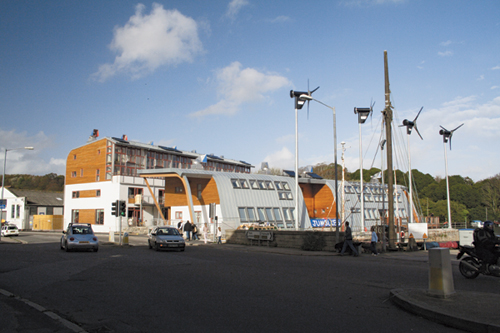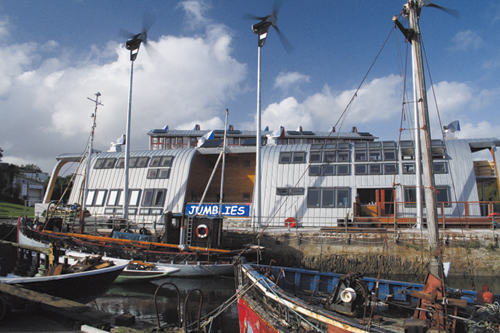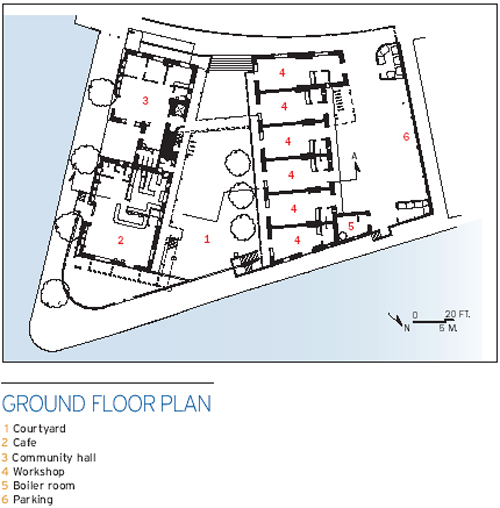Design for a Carbon-Free Life: The Pursuit of
Daylighting, passive solar design, glazing, shading, and insulation are directly related to the need for electrical lighting and affect heating and cooling loads. According to current plans for Solar 2, a north-facing skylight system and copious glazing will provide enough daylight so that use of electric lights will not be required for roughly 80 percent of peak operational hours. The orientation of the skylight and a vegetated screen wall will help limit solar heat gain.
Once the demand for power is reduced as much as possible without compromising the building's performance or the health and comfort of its occupants, the focus of the design process turns to the building's energy sources. Solar 2's energy needs will be fully met by on-site supplied solar energy. However, other on-site generation strategies, such as combined heat and power (CHP), which allows capture of the energy that is normally lost in conversion and transmission from a utility, should also be considered when striving to meet a low-energy goal, says Cousins. CHP, also known as co-generation, produces both heat and electricity from a single source. Plants relying on this strategy are more efficient than separate-source plants and produce fewer emissions.Â
Â
|
Â
Architects and engineers say that reaching a zero-energy goal necessarily requires a much more integrated design process than is typical for a conventional building.
Combining biomass-fueled co-generation with wind or solar power can produce a very energy-efficient building that consumes little fossil energy, says Cousins. Integrating active solar systems into the building envelope early in the design stage is both more cost-effective and typically yields better performance than adding them on later, she adds. Such systems include photovoltaics (PV), solar hot-water collectors, and transpired solar collectors, which preheat ventilation air as it enters the building in winter, and help shield the envelope from heat gain during the summer.
For Solar 2, the engineers propose a PV array that can generate up to 92,716 kWh per year, or about 108 percent of the building's projected demand. Four unitary ground source heat pump units will provide heating and air conditioning. A building management system will help operations reach optimal energy efficiency, as well as control electrically actuated windows. To aid individualized zoning control, the building will be equipped with four separate air-handling units.












